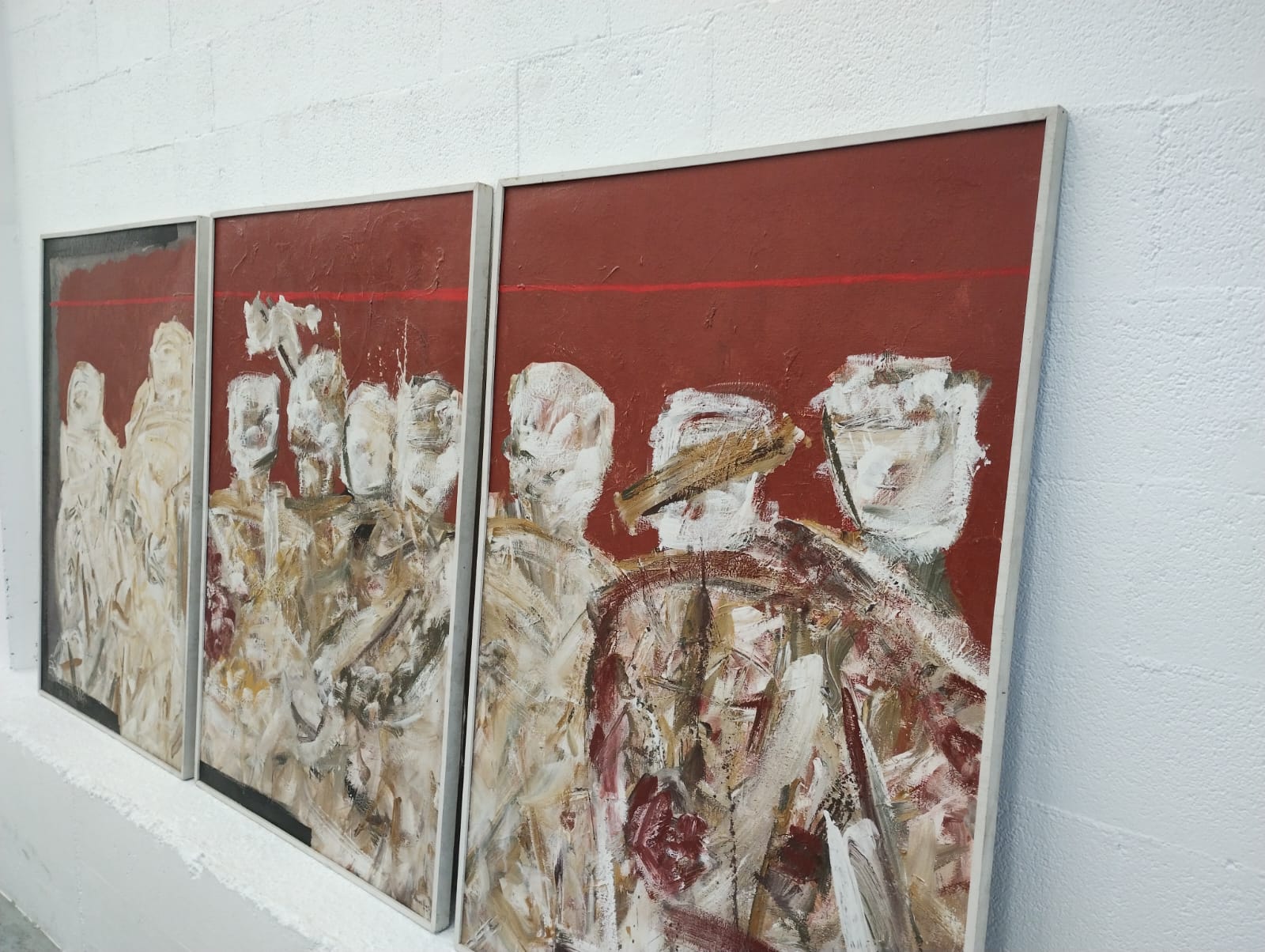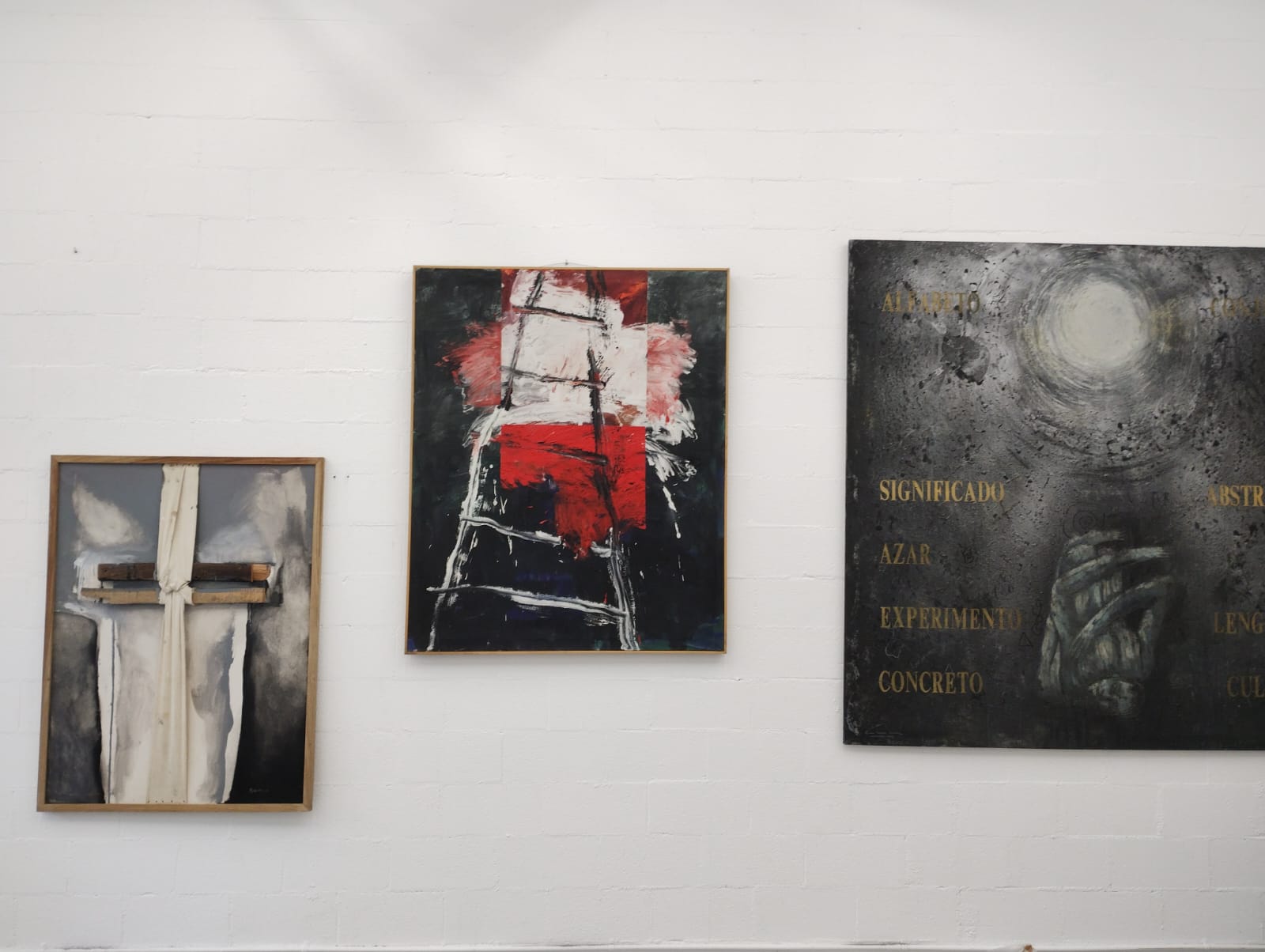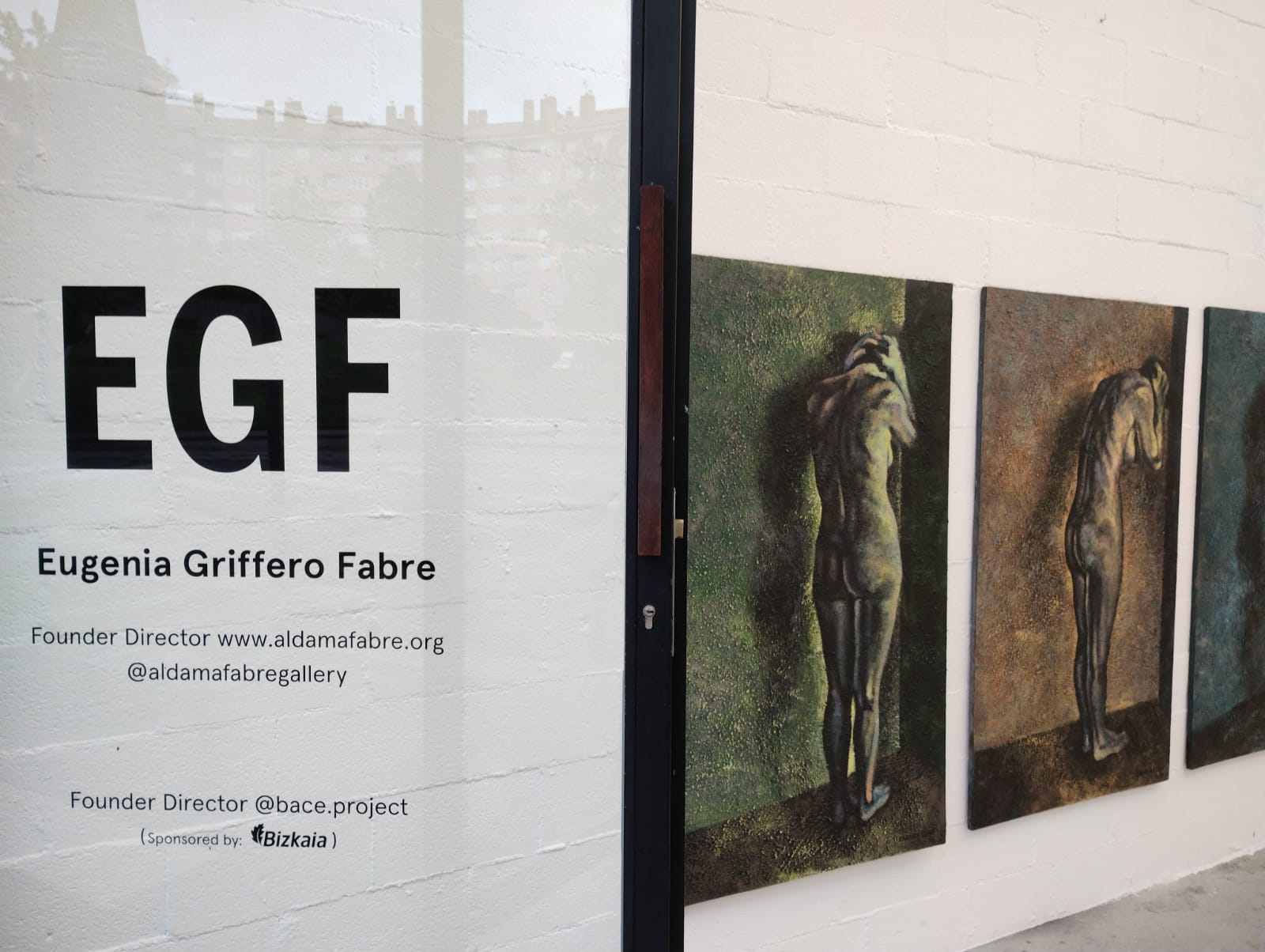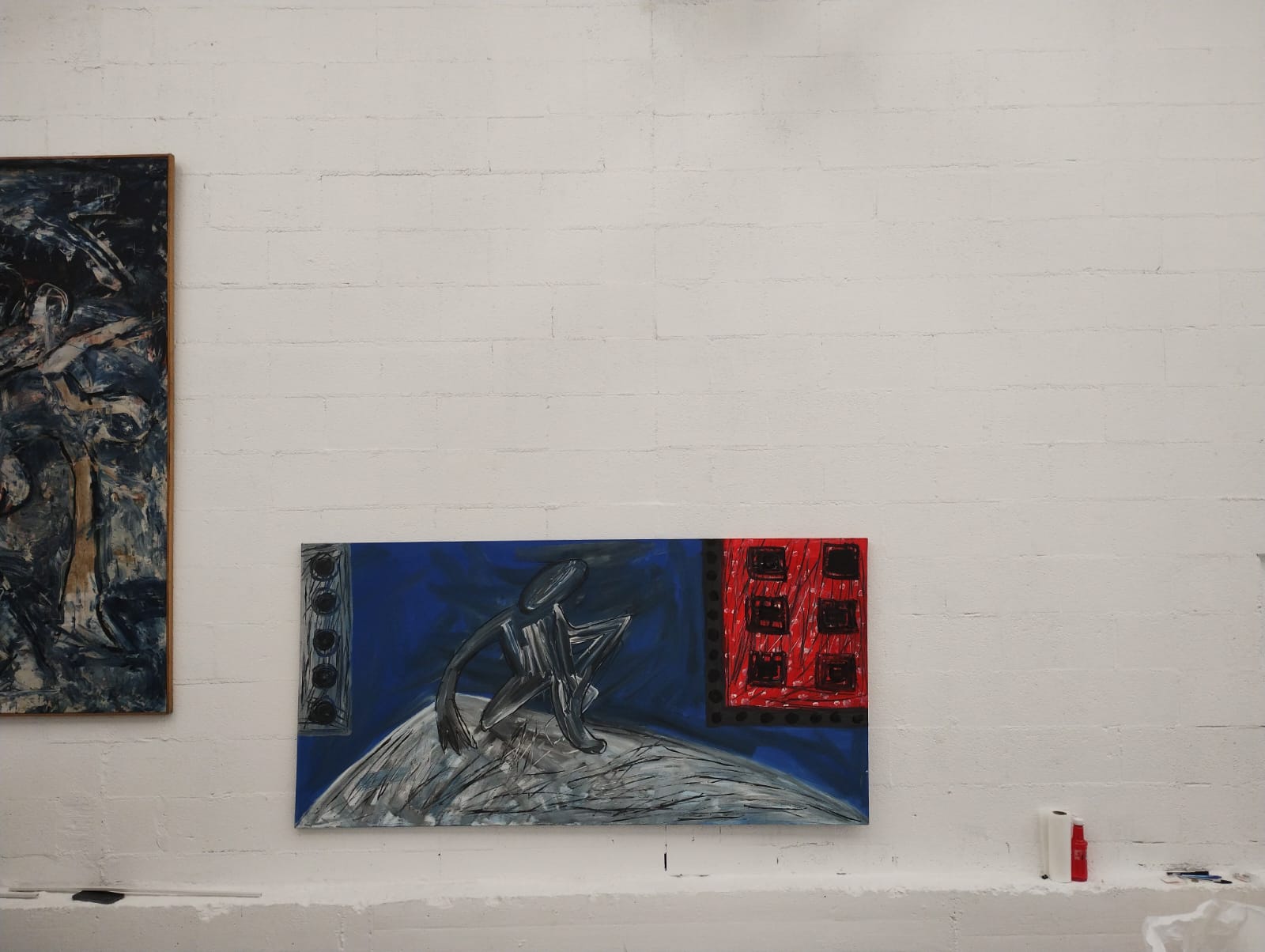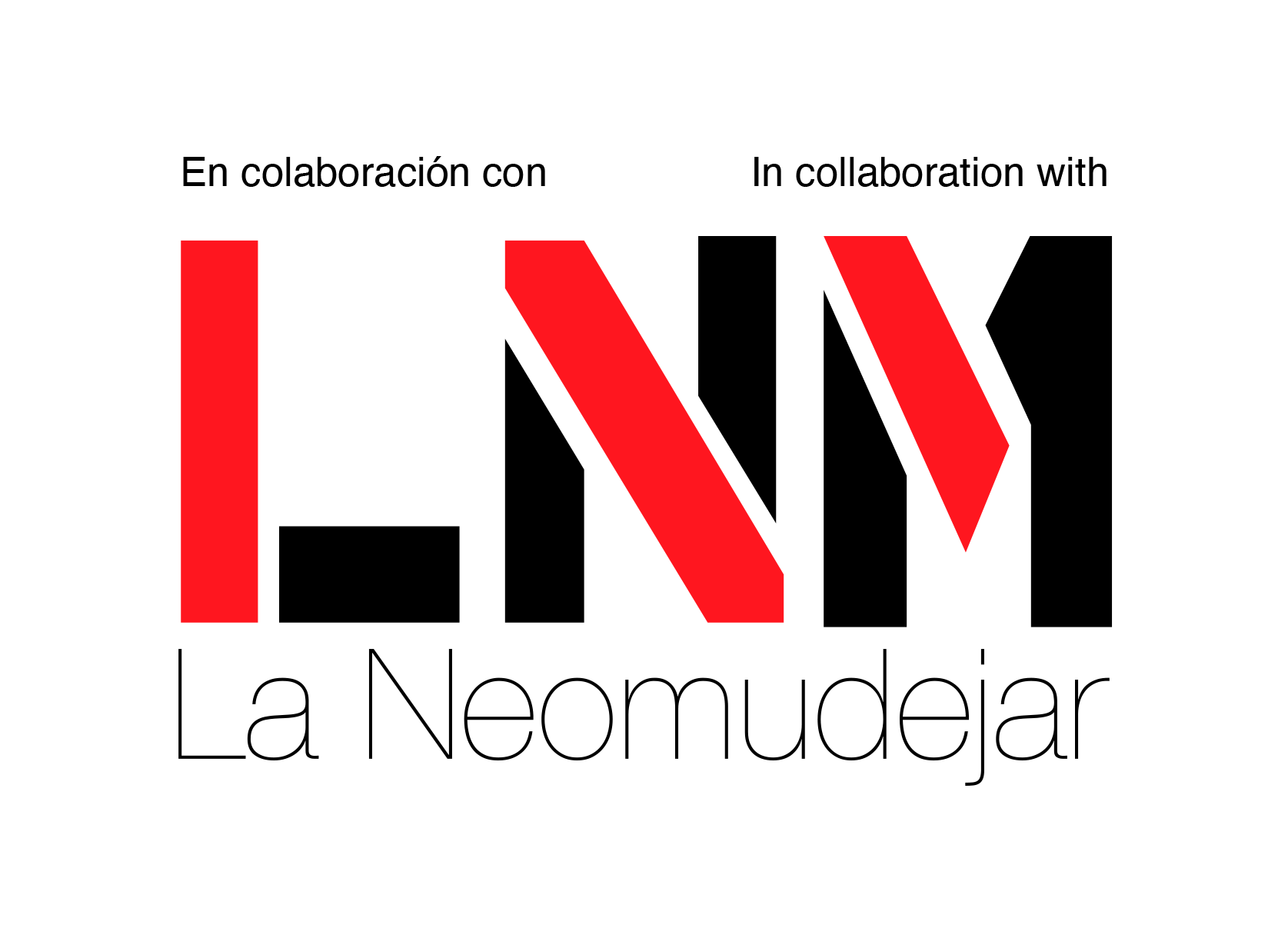Más allá de la frivolidad de los Ochenta
IN COLLABORATION WITH THE NEOMUDEJAR
It is well known that during the 1980s, the Spanish state experienced a period of cultural and political upheaval where the country was opening up to modernity and new forms of expression, and the young artists of the time were exploring new forms of art and visual language.
However, these artists also encountered a global social context in which frivolity and consumerism were becoming the norm. Popular culture and television were omnipresent, and many creators struggled to make their voices heard amidst the flood of empty stimuli inundating society.
The artists of the 1980s found an escape route in reclaiming painting as a medium capable of communicating something deeper than the simple image. Far from the market strategy, names such as Carmen Isasi, Antonio Alvarado, Xavier Egaña, Rafael Peñalver, Paco Leal, Eduardo Arenillas or Ciria, opened up their creativity from the desire to fit their experience and personal language in opposition to an incipient gallery market that demanded repetitive series of the same work with a minimum of variation. The personal language, the introspective or social gaze was relegated to a marginal sphere in order to give rise to a pop culture.
The Museo La Neomudejar has generated a collection that is not only differential but also complementary to these late twentieth-century periods. On this occasion, it presents other views focused on a very personal position far removed from the frivolity, pop culture and the established narrative of the 80s, which were embedded in the misnamed movida madrileña.
In this context, the Spanish painters of the eighties had to fight against the dominant superficiality, the museum and art market interests that threatened to devour them. Despite the dificulties, these artists managed to create a lasting and significant body of work, which today continues to be studied and revisited not from the perspective of the curator of the late 20th century but from that of the critical viewer of the 21st century who is aware of the context in which they were made.
Artists: Carmen Isasi, Xabier Egaña, Rafael Peñalver, Antonio Alvarado, José Manuel Ciria, Eduardo Arenillas and Paco Leal.
-
EN COLABORACIÓN CON LA NEOMUDÉJAR
Por todos es conocido que durante los años ochenta, el estado español experimentó una época de agitación cultural y política donde el país se abría a la modernidad y a nuevas formas de expresión, y los jóvenes artistas de la época exploraban nuevas formas de arte y lenguaje visual.
Sin embargo, estos artistas también se encontraron con un contexto social global en el que la frivolidad y el consumismo se estaban convirtiendo en la norma. La cultura popular y la televisión eran omnipresentes, y muchos creadores luchaban por hacer oír su voz en medio de la avalancha de estímulos vacíos que inundaba la sociedad.
Los y las artistas de los ochenta encontraron una vía de escape en la reivindicación de la pintura como un medio capaz de comunicar algo más profundo que la simple imagen. Alejados de la estrategia de mercado nombres como Carmen Isasi, Antonio Alvarado, Xavier Egaña, Rafael Peñalver, Paco Leal, Eduardo Arenillas o Ciria, abrían su creatividad desde el deseo de encajar su experiencia y lenguaje personal en oposición a un incipiente mercado galerista que exigía series repetitivas de una misma obra con un mínimo de variación. El lenguaje personal, la mirada introspectiva o social se relegaba a un ámbito marginal, para eclosionar una cultura pop.
El Museo La Neomudejar, ha generado una colección no solo diferencial, sino complementaria a estas épocas de finales del XX. En esta ocasión se presentan otras miradas enfocadas a un posicionamiento muy personal alejado de la frivolidad, la cultura pop y la narrativa asentada de unos 80 encastrados en la mal llamada movida madrileña.
En este contexto, los pintores españoles de los ochenta tuvieron que luchar contra la superficialidad dominante, los intereses museográficos y del mercado del arte que amenazaban con devorarlos. A pesar de las dificultades, estos artistas lograron crear una obra duradera y significativa, que hoy sigue siendo estudiada y revisitada ya no desde la óptica del comisario de finales del XX sino del espectador crítico del XXI conocedor del contexto bajo el que fueron realizadas.
Artistas: Carmen Isasi, Xabier Egaña, Rafael Peñalver, Antonio Alvarado, José Manuel Ciria, Eduardo Arenillas y Paco Leal.
